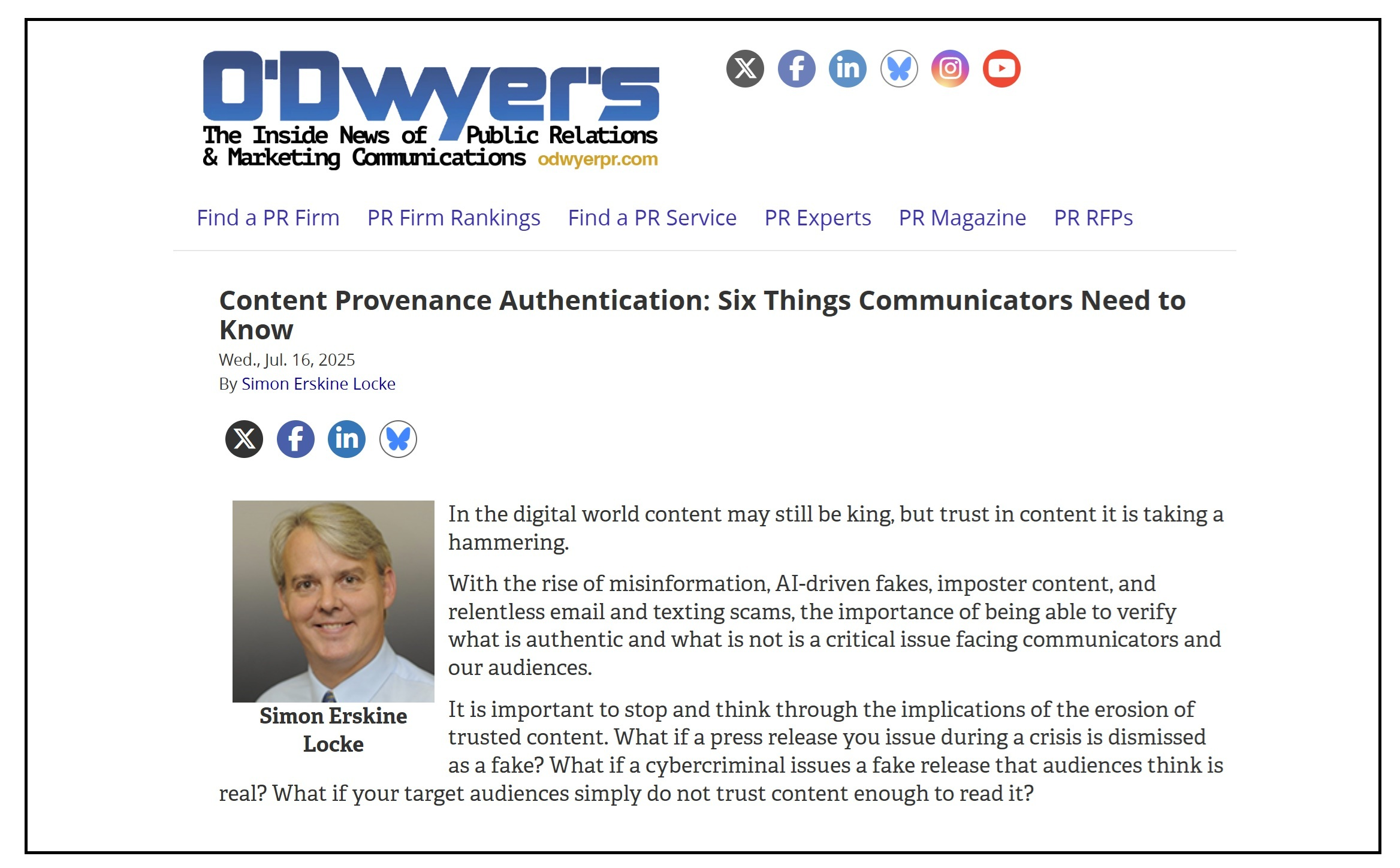Six Things Communicators Need to Know About Content Provenance Authentication
In an article for O’Dwyer’s, Content Provenance Authentication: Six Things Communicators Need to Know, I write “content may still be king, but trust in content is taking a hammering.”

New Pew Research shows almost three quarters of Americans have been subject to digital scams or attacks in the last year alone! It should be no surprise that trust in digital content is being eroded .
Trust matters. There are real consequences if a press release or any other form of content is not trusted enough to be read or a cybercriminal issues a fake release audiences think is real.
In O’Dwyer’s I note, “The world’s largest technology and media companies and an emerging ecosystem of technology startups including my company Tauth Labs, are working on a cutting-edge approach to building provenance into content.” By integrating digital watermarks into documents, images, audio and video, communicators have the ability to re-build trust.
Here are six things communicators need to know about content provenance authentication I detail in the article.
1. In the digital domain we are moving from “trust but verify” to “verify then trust”.
2. Content authentication provides a way for companies to add a layer of digital security to their content and help clients spot fraudulent content before they act on it.
3. The technology, based on global standards developed by the Coalition for Content Provenance and Authenticity (C2PA), is built around three key steps 1) the verification of companies or individuals as content originators, 2) the integration of robust digital watermarks into content, and 3) the potential to immutably register content on blockchain.
4. Authentication is not just a defensive step, it is a potential competitive advantage. Journalists will be more likely to trust and report on an authenticated press release. Content curators will be more likely to select authenticated content. Search engines are likely to rank it higher.
5. In the arms race between the good guys and the bad guys, content authentication should be considered one of the foundational components of digital security.
6. Legislators are looking at ways to incorporate digital provenance into political communications.
The authentication technology we are bringing to the communications industry is a starting point for new applications and tools to identify fraud and track changes. It can also be used to provide proof of where photographs were taken or video filmed, and show if content was AI generated. At Tauth, we are creating customized credentials for individual companies, as well as developing tools to identify fraud and manage authenticated content on blockchain.
A quote from a senior executive at a global media company underscores the importance of this technology, “In three years we’ll be wondering how it was possible that content did not include provenance credentials”.
Simon Erskine Locke is co-founder & CEO of Tauth.io, which provides trusted content authentication for communications based on C2PA standards. He is the founder & CEO of CommunicationsMatch™ and a former head of communications functions at Prudential Financial, Morgan Stanley and Deutsche Bank.
